There’s no denying it. The looming threat of drug-resistant bacteria is turning into a very real problem. In fact, antibiotic resistance is quickly becoming one of the greatest global health challenges of the 21st century, and a big reason for concern might be right in your tap water.
Every day, pharmaceutical drugs are contaminating water sources like groundwater, lakes, bays, and rivers, and sewage treatment plants are finding it hard to keep up. In fact, they are struggling with the impossibility of filtering out chemicals they were never designed to deal with in the first place.
You’re wrong if you think the problem won’t affect you.
Researchers have discovered that traces of pharmaceutical drugs can be found in the drinking water of over 40 million Americans,[i] meaning that millions of people are exposed to unregulated levels of antibiotics every day, and far too few have any idea what the sinister consequences can be.
The Spread of Antibiotic Resistance
According to the Center for Disease Control and Prevention[ii], every year an estimated 23,000 people in the United States are killed by infections that modern medicine should be able to vanquish — but it can’t. These infections are caused by drug-resistant bacteria; microbes that have been exposed to antibiotics so many times throughout previous generations that they have evolved traits that let them withstand the antibiotics designed to kill them.
The development of resistance in bacteria is a natural process and an example of “survival of the fittest” that happens to every living species that produces offspring with variable traits.
Yet the overuse and misuse of antibiotics has given bacteria more opportunities to evolve and develop antibiotic resistance.[iii] While there are many factors to blame, a big part of the problem comes from the ways that antibiotics enter the water system.
Antibiotics’ Growing Threat to Water Systems
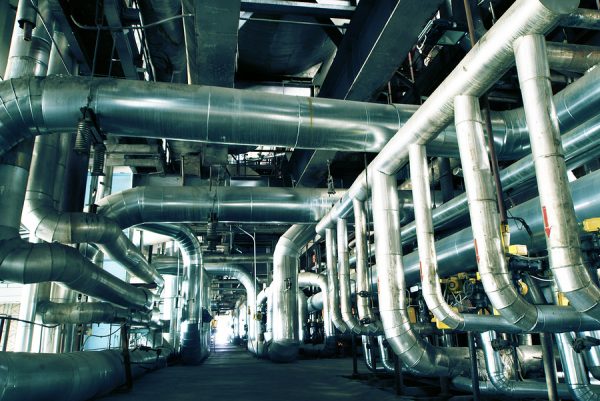
Antibiotics transformed the world of medicine, but decades of widespread use have come at a high cost for the environment.
Since their discovery, millions of metric tons of antibiotics have been produced, used, and disposed of, and many of these drugs wind up in the water system. Unsettlingly, a nationwide study by the U.S. Geological Survey in 2000 [iv] found that 80 percent of the rivers and streams they tested had detectable levels of pharmaceuticals like antibiotics and antidepressants.
The future impact of pharmaceutical drugs on natural ecosystems is still unknown, but initial research has shown that hormone disruption, antibiotic resistance, and the development of female genitalia in male fish is already occurring. Pharmaceuticals are also messing with the gender rates of fish species, and in some places the ratio of female to male fish exceeds 10 to one.[v]
The effects for fish and amphibians is clear, but what the long-term impacts for humans exposed to this tainted water is still unknown.
How Are They Getting in the Water?
Considering the sheer number of antibiotics manufactured around the world every year, it’s no wonder that a large percentage of them wind up in water. Antibiotics wash into the general water supply from agriculture, medicine cabinet purges and even wastewater treatment plants ill-suited for dealing with them.
Antibiotics wash into the general water supply from agriculture, medicine cabinet purges and even wastewater treatment plants ill-suited for dealing with them.
(1) Antibiotic Overuse in Agriculture
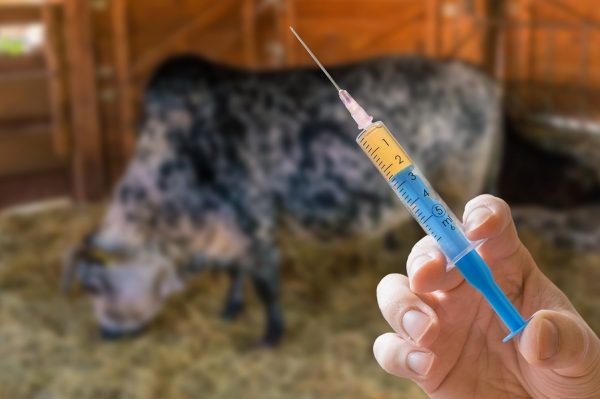
Whether they are necessary or not, the meat industry is notorious for over-prescribing antibiotics to livestock.
In many cases, daily servings of antibiotics are used to achieve more rapid growth rates, and a good portion of the two trillion pounds of animal manure produced in livestock production sites across the country is tainted with growth hormones and antibiotics. Because only a small amount of this manure is properly disposed of, trace amounts of antibiotics often leach into the groundwater supply or get swept into rivers and streams after rainstorms. In many cases, these levels are high enough to pose a risk.
Recent reports[vi] found that water tested near a factory farm in Nebraska had more than four times the recommended amount of trenbolone, a hormone that’s used to add weight to cattle and has been found to change the testosterone levels in fish.
(2) Disposing Medications Down the Drain
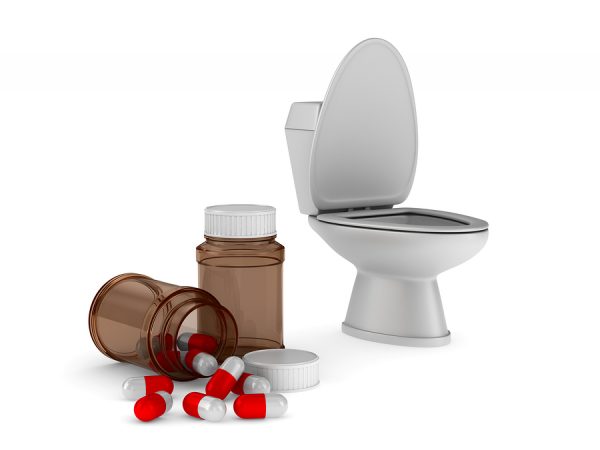
Over 60 percent[vii] of Americans are currently taking prescription drugs, and finding ways to properly dispose of expired or unwanted medications is a common problem. Many homes have medicine cabinets filled with unused and expired medication, and most of these won’t be disposed of safely.
Instead, less than 2 percent of unwanted medications are returned to the pharmacies where they came from and roughly 35 percent of medications are simply flushed down the toilet.[viii]
Nursing homes and other health care institutions are also part of the problem. While hospitals often have on-site pharmacies that are willing to take back unused drugs, many nursing homes are known to quietly flush away old medications, especially after a patient dies.
Even more worrying, some chemicals still get into the water system when medications are used exactly as intended. Human bodies only metabolize a small fraction of the drugs they take in, meaning that a good portion of the active ingredients are excreted through urine and feces or sweated out.[ix] This means that when you relieve yourself or take a shower, traces of the chemicals from your medication may wind up in the water system.
(3) Wastewater Treatment Plants
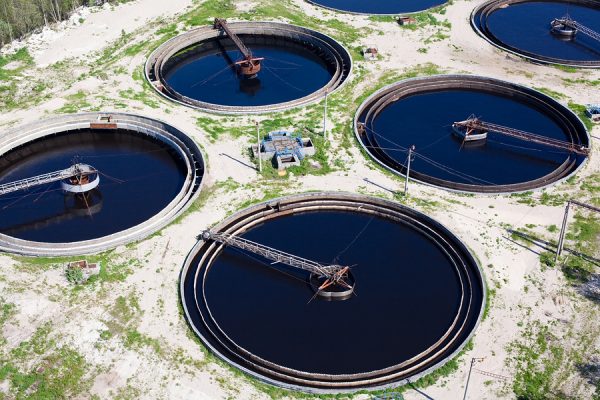
Processing antibiotic-tainted water through wastewater treatment plants doesn’t necessarily mean they’re removed from the water supply.
Deep inside the holding tanks of untreated sewage sludge, diverse communities of bacteria have time to proliferate. This muddy mixture often contains an alarming concentration of antibiotics that were either flushed down or expelled through human waste which interacts with nearby bacteria and destroys all but the most drug-resistant varieties, therefore speeding up the evolutionary process of antibiotic resistance.
Even more sinister, the soupy sludge created in wastewater treatment plants give bacteria plenty of time to mingle together, and occasionally different varieties will swap strands of DNA with each other in a process called horizontal gene transfer.[x]
This means that nonresistant bacteria can pick up resistant genes from other microbes and quickly evolve into superbugs that can’t be treated with any known antibiotics.
Worst of all, these ever-evolving strains of bacteria and antibiotic drugs rarely stay contained in wastewater treatment plants.
Traditionally, treatment plants have focused on removing organic material and nutrients like phosphorus and nitrogen from water, and pharmaceuticals are a relatively new concern for them to deal with.
While a major portion of dangerous chemicals are removed from the water system by the treatment process, facilities aren’t required to use filters for pharmaceutical chemicals.[xi] The laws regulating clean up procedures haven’t kept up with the influx of antibiotics on the market today, and few treatment plants are equipped to properly pull them out of the water.
Even when all but trace amounts of a pharmaceutical are removed from water, it can still be biologically active.
Research has shown that 10 percent of ibuprofen and naproxen in wastewater treatment plants is discharged out again, and even when it is properly filtered out, the medications simply become heavily concentrated in sludge instead. Because some of this sludge may eventually be released back into the environment for use as fertilizer (possibly even for food crops), the problem doesn’t go away.[xii] [xiii]
In light of these concerns, wastewater treatment plants are pursuing better ways to remove all traces of pharmaceuticals from sewage. The range of potential techniques include relying on medication-munching microbes[xiv] and treating water with ozone.[xv] However, these treatment options are still more advanced than what most plants can handle, are extremely expensive, and still can’t completely remove every trace of pharmaceuticals from treated water.
5 Ways to Reduce Pharmaceuticals & Antibiotics in the Water System
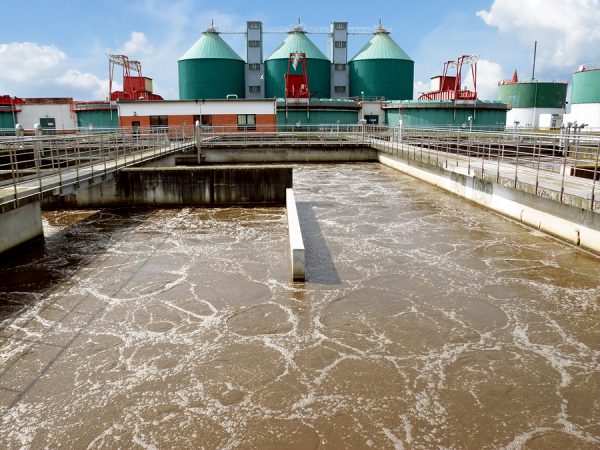
In many ways, the best way to keep water systems safe from antibiotics is to prevent them from getting there in the first place. If you follow these suggestions, you’ll be able to prevent your share of antibiotics from tainting the water system and ensure this shared resource stays a little cleaner everyone.
- Limit Bulk Medication Purchases: It might be cost effective to buy your medication in bulk, but the odds are good you won’t have a chance to use it all before it expires. Buy only what you know you’ll need, and you’ll lessen the odds of ending up with big bottles of pills that need to be disposed of.
- Don’t Flush Medications Down the Drain: At bare minimum, don’t be guilty of putting your medications directly into the water system. Though the FDA recommends that some narcotic medications should be flushed to prevent overdoses or dangerous recreational use, there are usually drug take-back programs that will properly dispose of your medications for you.[xvi]
- Take Advantage of Drug Take-back Programs: In 2010, a federal law[xvii] made it easier than ever to dispose of unwanted drugs, so check out your local area for information about drug take-back days that you can be part of.
- Throw Away Meds Responsibly: Though decomposing in a landfill is arguably better for medications than spreading though the water system, chemicals can still leak out of the landfill and into groundwater. To carefully dispose of your meds, remove them from packaging place them in a watertight plastic bag and mix in a small amount of water so that the medication will dissolve.
- Start Using “Kitchen Medicine” To Treat Common Illnesses (i.e. 100% Natural Herbal Remedies): Instead of rushing to the doctor for another prescription every time you’re sick, start learning to treat common illnesses and injuries at home with natural remedies. And skip the pharmaceuticals entirely!
Ways to Remove Pharmaceuticals & Antibiotics from Your Water
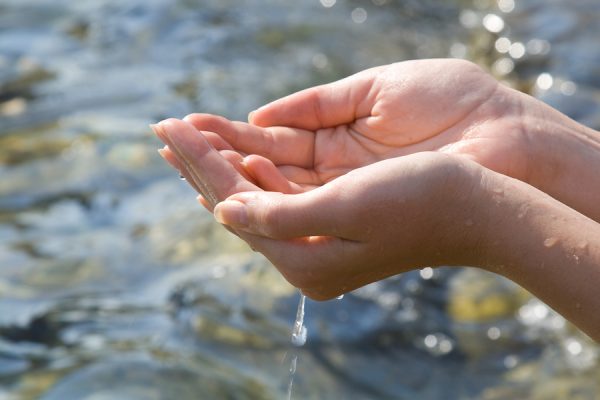
If you’re looking for a way to make your own water safer to drink, the solution isn’t to subsist on bottled water instead. Studies have found that almost a quarter of bottled water comes directly from municipal sources, meaning most brands aren’t any safer than the water from your tap.[xviii]
Home filtration systems might not work either, and the process of oxidizing chemicals might even make your water more toxic. The exceptions are reverse osmosis and activated charcoal systems that can remove many (but not all) pharmaceutical drugs.[xix]
In Summary
At this point, scientists are only just beginning to understand the effects of pharmaceuticals on the natural world.
While they will continue to investigate the consequences of widespread antibiotic use, the evidence is clear that keeping antibiotics out of the water system is extremely important.
By educating yourself on the impacts of antibiotics in water and the ways they wind up there in the first place, you can start to take the necessary steps to keep you, your community, and the entire world safer from the threat of antibiotic resistance.
(This article was originally published on April 1, 2017.)
Sources
[i] Scientific American: External Medicine: Discarded Drugs May Contaminate 40 Million Americans’ Drinking Water
[ii] Center for Disease Control: Antibiotic/Antimicrobial Resistance
[iii] European Medicines Agency: Antimicrobial Resistance
[iv] The Associated Press: Pharmaceuticals Found in Drinking Water
[v] Emerging Wastewater Contaminant Metformin Causes Intersex and Reduced Fecundity in Fish
[vi] Identification of Metabolites of Trenbolone Acetate in Androgenic Runoff from a Beef Feedlot
[vii] Rx for America: Nearly 6 in 10 Adults Take Prescription Drugs, Study Says
[viii] Harvard Health: Drugs in the Water
[ix] Drugs can Pass Through Human Body Almost Intact: New Concerns for Antibiotic Resistance
[x] Antimicrobial Resistance Learning Site: Horizontal Gene Transfer
[xi] Scientific American: Only Half of Drugs Removed by Sewage Treatment
[xii] Cleaning Up the Breeding Ground for Antimicrobial Resistance
[xiii] Crops Absorb Livestock Antibiotics, Studies Show
[xiv] In a Tiny NY village, Bacteria Do a Big Job on Drugs in Wastewater
[xv] The Scientist: Drugging the Environment
[xvi] US Food and Drug Association: Disposal of Unused Medicine: What You Need To Know
[xvii] Secure and Responsible Drug Disposal Act of 2010
[xix] Harvard Health: Drugs in the Water
Marjory Wildcraft is the founder of The Grow Network, which is a community of people focused on modern self-sufficient living. She has been featured by National Geographic as an expert in off-grid living, she hosted the Mother Earth News Online Homesteading Summit, and she is listed in Who’s Who in America for having inspired hundreds of thousands of backyard gardens. Marjory was the focus of an article that won Reuter’s Food Sustainability Media Award, and she recently authored The Grow System: The Essential Guide to Modern Self-Sufficient Living—From Growing Food to Making Medicine.
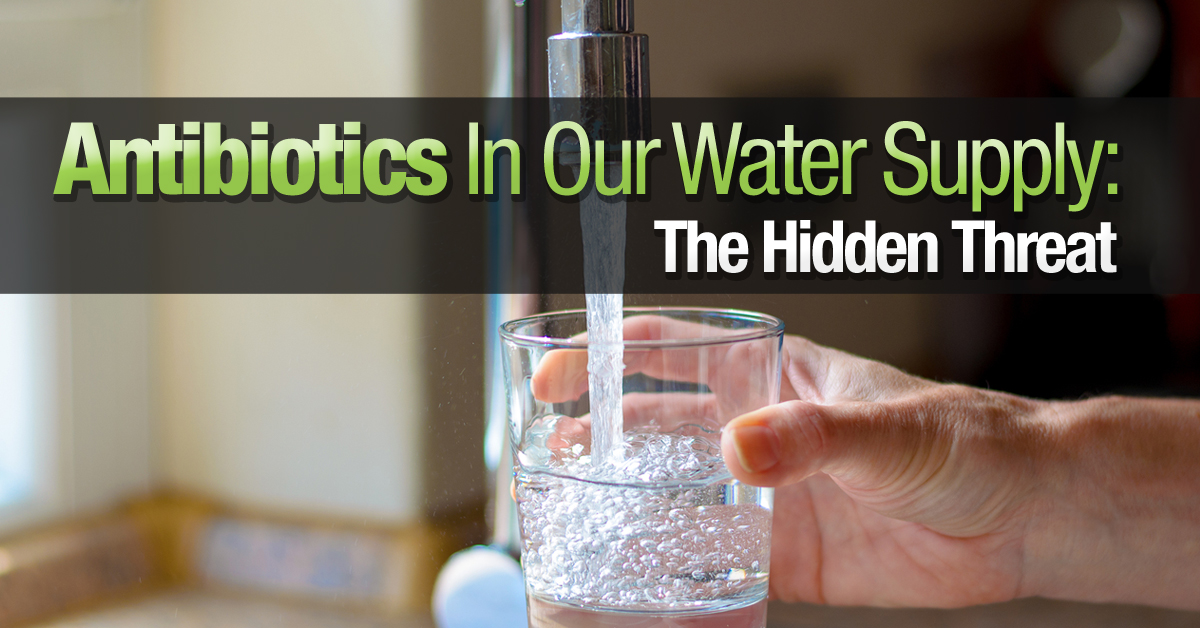









COMMENTS(15)
What do you think of well water? Is it safer then municipal water?
I heard it can also be contaminated by parasites and other bacteria.
I’m not fond of reverse osmosis filtration, do you know what’s the best alternative?
Hi Marjory! What is your opinion on rainwater catch systems and distillation systems? Thanks and have a great day!
The problem I have is, what do they do when someone brings the expired drugs to “take-back” programs?
How about incinerating them?
The Propur gravity filters are good.
http://www.propurusa.com/assets/images/Lab%20Report%2015-134.pdf
Also Berkey’s are good too.
http://www.berkeyfilters.com/berkey-water-filters/big-berkey.html?a_aid=538a5cb8c8907&a_bid=8b4878fc
Here is a good article:
http://www.naturalnews.com/047373_Big_Berkey_water_filter_ProPur_lab_tests.html
Make the CAFOs compost their dead animals as well as their tainted — ie all — manure… that source has got to be the massive input….
Also, we did a constructed wetlands as part of our dark-greywater system (which of course got us prosecuted for non-standard systems) but the water company tested the water and even the fluoride was down to natural levels, and the EPA labs multiply tested and showed that the water coming out was cleaner than the creeks of the area….
So now we think it would be a great idea to have a bullrun valve on the official blackwater system we were forced to install and keep that option open for emergency management if we could just rig a pressure pump to push the constructed greywater wetland output back to the house for use (plus berkefeld for drinking and cooking) just as if we were drawing water from our ‘private’ creek…
And since we avoid pharmaceuticals like the plague those should be cleaned out as well, particularly with input from stormwater as well….
Why not…. Every home should have an emergency system, by order of the ‘first responders’ in climate disasters (EMA stuff) to be able to last without the grid of all kinds for at least 3 days minimum… agreed? and no one has made any laws against EMA systems designs YET, get em done while it’s open… right?
There IS a workable andaffordable solution! For some years now, devices that structure water have been available at affordable prices thanks to the Wellness Enterprise. Using a free flow pattern and vortexing, these Natural Action units neutralize all harmful substances energetically–fluoride, chlorine, antibiotics and other meds, pesticides,etc. The result is safe and pure energized water like it is found in nature.
Independent scientific testing verifies this method and for me personally it has transformed my health and life.Structuring Water is something the GROW Network needs to know about, start using and share the word!
Read here about lifetime and money back guarantees for Structured Water units:
http://thewellnessenterprise.com/?twe=PureWater
Not sure this is affordable. Clicked your link there and the sink unit is close to 500$ and goes up to 2,000$. I think I would just stick to rain water and natural spring water
Great article! I actually live in Nebraska, and a few years ago had issues with hormones. My gynocologist tested me & my testostrone levels were low, and I had other problems as well. Go figure, if it messes with fish it can mess with us to! Im proof, it may not of been just this one thing, but the combination of this & all the other toxins we are exposed to leads to illnesses. Which I also have had since 2009. Just thought Id share since im from good ‘ol Nebraska! Take these toxins serious, and start caring about what you put in & on your body. It DOES make a difference!
Where and what type of water purfting system can I buy to clean household water effectively?
cartierbraceletlove Мариночка! Добрый день! Сегодня случайно попала на Ваш сайт и получила море позитива и полезностей. Ваши описания рецептов просто потрясающие! Когда их читала, складывалось такое впечатление что вы просто прочли мои мысли и изложили их на своем сайте!!! Было очень приятно встретить родственную душу, хотя у нас разница в возрасте 17 лет. Спасибо Вам большое за Ваш позитив. С уважением Татьяна
prix bracelet cartier love faux http://www.bijoux-classique.com/
cartierbraceletlove what does it matter who started it.what matters is how it ends.
van cleef arpels bracelet copie http://www.acheterbijouxsite.com/category/van-cleef-arpels-bijoux-replique
I have had a reverse osmosis system and loved it, however the cost of replacing the filters and labor involved precluded its longevity. I’m back in to find out a suitable alternative. I already have too many auto immune diseases to mention. I am ethically, morally and financial responsible, and this is getting out of control. Thanks for your platform and sharing your information to educate the people. Any suggestions?
We have also done some comparisons in the water-cleaning tech, and also like the RO quality but for simplicity and the minerals as well, there’s the British Berkefeld to which you add the fluoride filters if you are so unlucky as to have criminals putting that in your water…. years and years go by when filtering tap water through the berkey and not needing any appreciable maintenance… nice explorer’s history to add to its appeal and with its abilities to handle the outback’s bio-toxins, the anti-biotics should be dealt with ok… plus it had a good r ecord on heavy metals….. and only a bit more expensive than our countertop RO…
Marjory, so what’s the solution?
I have a zero pitcher filter for day to day drinking water. I,m hoping that will be enough. For the garden I have a rain catchment system . All my indoor veggies and air cleaning plants get filtered and fortified water, and it shows. But, still i,m afraid it,s not enough. So sad ,this is slowly killing us all.
For drinking water I would stucture the water using a vortex system. GANS in the water would also help (MT Keshe work) as would colloidal silver.